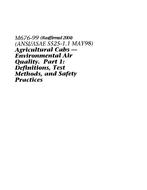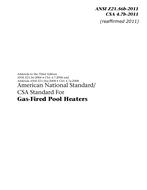Preface
This is the third edition of CSA C22.2 No. 233, Cords and cord sets for communication systems, issued by CSA Group under Part II of the Canadian Electrical Code. It supersedes the previous editions published in 2009 and 1989. For general information on the Standards of the Canadian Electrical Code, Part II, see the preface of the latest issue of CSA C22.2 No. 0, General Requirements – Canadian Electrical Code, Part II. Changes to this edition include the following: a) In Clause 6.1.1, the FT1 marking is now mandatory for cords meeting the FT1 requirements. b) References to the testing standard, CSA C22.2 No 0.3, have been changed to the recently published harmonized standard, CSA C22.2 No 2556. c) Clause 7.1 emphasizes that fire rating marking is optional to indicate that the coiled cord does not require fire rating. This Standard is considered suitable for conformity assessment within the stated scope of the Standard.
Scope
1.1 This Standard applies to cords and cord sets intended for indoor use to electrically connect communication systems that have a normal operating voltage-to-ground of less than 150 V, and that are installed or used in accordance with the Rules of the Canadian Electrical Code, Part I. 1.2 This Standard applies to single-, paired-, and multi-conductor cords, as well as cord sets, where no part of the cord is subjected to a temperature exceeding 60 ?C. 1.3 This Standard does not apply to a) cords and cord sets that contain conductors other than those used specifically for communications circuits, such as electric light, power, Class I, and Class II circuit conductors (as defined in the Canadian Electrical Code, Part I); or b) cords or cord sets covered by CSA C22.2 No. 21. 1.4 In this Standard, “shall” is used to express a requirement, i.e., a provision that the user is obliged to satisfy in order to comply with the standard; “should” is used to express a recommendation or that which is advised but not required; and “may” is used to express an option or that which is permissible within the limits of the Standard. Notes accompanying clauses do not include requirements or alternative requirements; the purpose of a note accompanying a clause is to separate from the text explanatory or informative material. Notes to tables and figures are considered part of the table or figure and may be written as requirements. Annexes are designated normative (mandatory) or informative (non-mandatory) to define their application.
Product Details
- Edition:
- 3rd
- Published:
- 05/01/2017
- ISBN(s):
- 9781488307102
- Number of Pages:
- 24
- File Size:
- 1 file , 1.3 MB
- Product Code(s):
- 2425093, 2425093, 2425093


